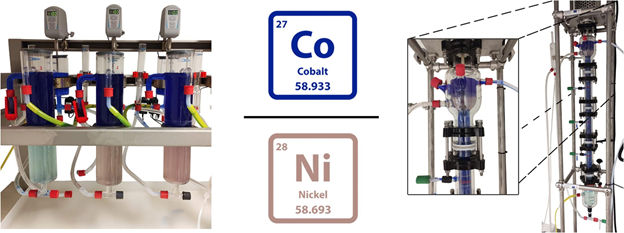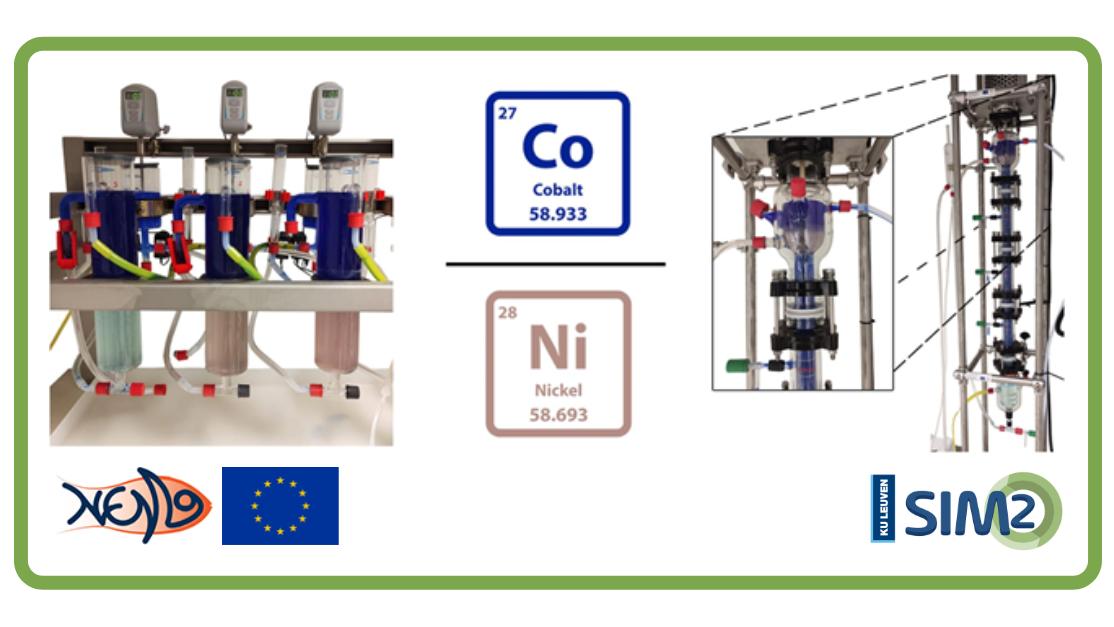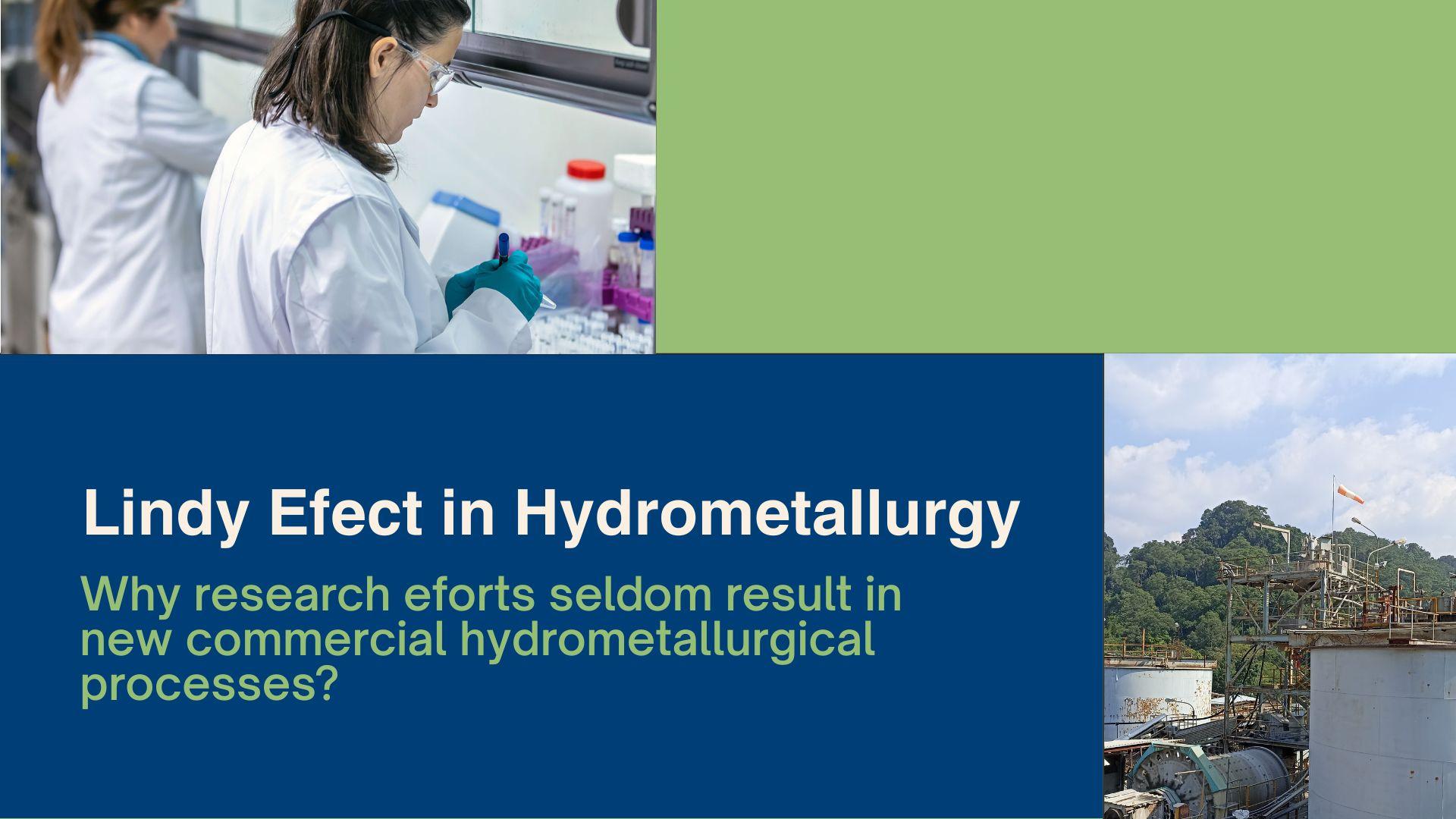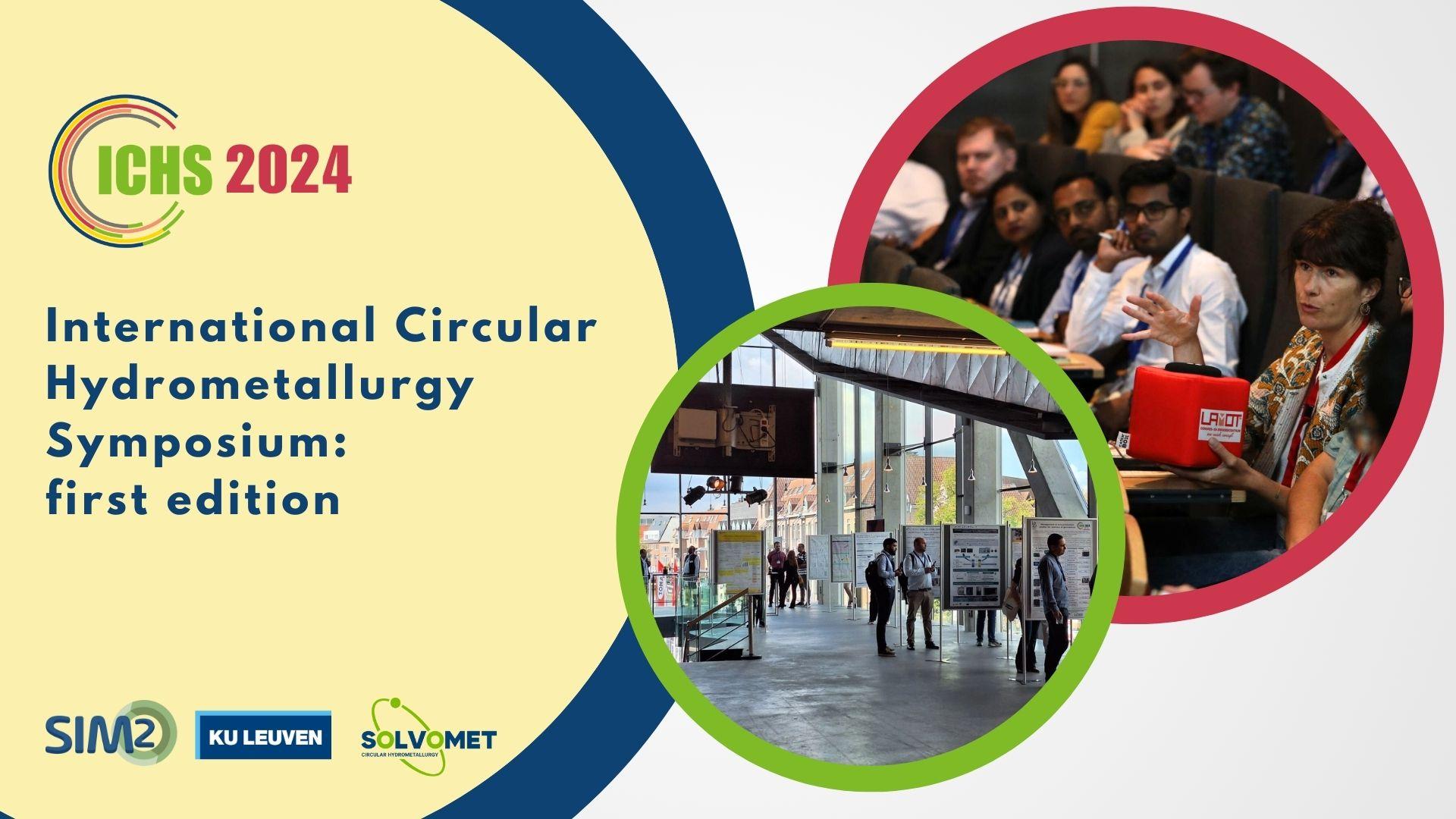Within the framework of the Horizon 2020 project NEMO, SOLVOMET/SIM2 researchers have compared the effect of mixer-settlers and agitated columns on the separation of cobalt and nickel with Cyanex 272. The results have been published in the journal Separation and Purification Technology. The specificities, advantages, and challenges of the operation of both types of liquid-liquid extraction equipment were discussed.
Optimisation on batch-scale level
The first part of this paper deals with the optimisation of different parameters for the separation of cobalt and nickel via solvent extraction (SX) from a sulphate feed. The performance of different aliphatic, mixed aliphatic–aromatic, and aromatic diluents was also studied.
It was found that the nature of the diluent had no significant impact on the extraction of cobalt. However, the co-extraction of nickel was found to be approximatively 10% lower in aliphatic diluents than in aromatic ones.
Continuous counter-current experiments in mixer-settlers and an agitated column
At the moment it is very difficult to find examples in literature in which two or more contactors are compared for the same type of experiments. After carrying out the optimisation in batch, the cobalt and nickel separation process was up-scaled using mixer-settlers and an agitated column.
In both cases, excellent separation was achieved but there were differences in the way the contactors had to be operated. Contrary to a column, which is a differential contactor, a mixer-settler is composed of discrete stages. In each one of these discrete stages, not only the mixing but also the separation of both phases takes place, which allows to maintain the chemical and hydraulic equilibrium whenever the mixer-settlers need to be shut down.
One of the biggest advantages of working with the mixer-settlers is that it is very easy to re-start them after shutting them down at the end of the workday or in case problems arise. In a column, where no discrete stages exist, the phases will disengage, and the equilibrium conditions will be lost once the column is stopped. One would need to run the column for some time before the equilibrium is reached again.
Depending on the characteristics of both phases this re-starting procedure can become challenging. Further discussion about the advantages and disadvantages of the practicalities for the use of the contactors can be found in the full paper, as well as recommendations on how to start up and operate the contactors when working with systems that tend to emulsify.
Full reference paper
Isadora Reis Rodrigues, Clio Deferm, Koen Binnemans, Sofía Riaño, “Separation of cobalt and nickel via solvent extraction with Cyanex-272: Batch experiments and comparison of mixer-settlers and an agitated column as contactors for continuous counter-current extraction”, Separation and Purification Technology, 2022, 296, 121326, https://doi.org/10.1016/j.seppur.2022.121326 (gold open access paper).
Acknowledgements
The research leading to these results has received funding from the European Union's Horizon 2020 research and innovation programme under grant agreement no.776846 (NEMO). This publication reflects only the author's view, exempting the Community from any liability.








